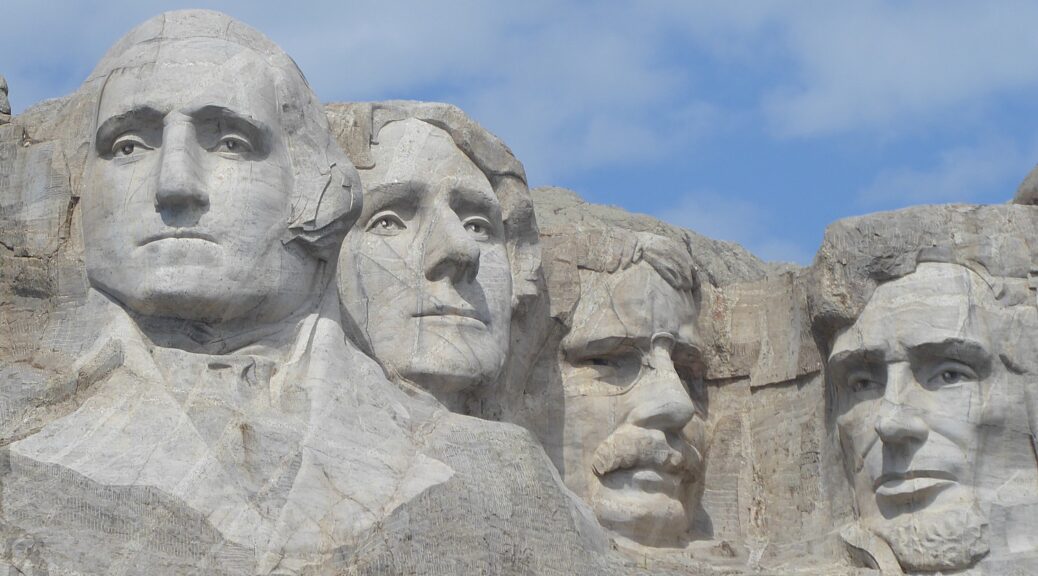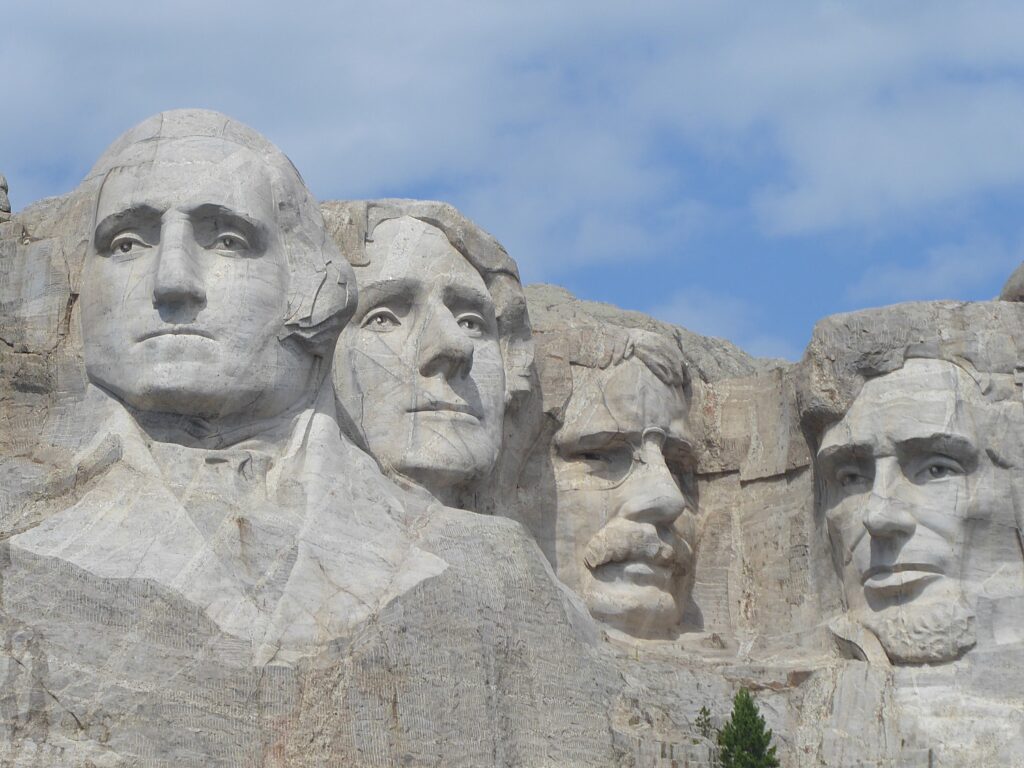
by Karen Rubin, Travel Features Syndicate, goingplacesfarandnear.com
It’s our last day of the Wilderness Voyageurs six-day “Badlands and Mickelson Trail” bike tour of South Dakota, when we would have biked back a portion of the Mickelson Trail that we cycled yesterday before visiting Mount Rushmore. But as luck would have it (and it is actually lucky), it rains as we leave Deadwood. It is lucky because the rest of our rides have been glorious and we did get to complete the 109-mile long Mickelson Trail, in addition to riding through Badlands National Park and Custer State Park. Our guides, James Oerding and John Buehlhorn, offer us alternatives: instead of doing the Mickelson 18 miles from Dumont to Mystic (the same trail we did yesterday but downhill) we go directly to Mount Rushmore and see if the weather dries out.
Mount Rushmore is such a familiar American icon, it may be a cliché. But seeing it “in person” makes you rethink what it is all about.
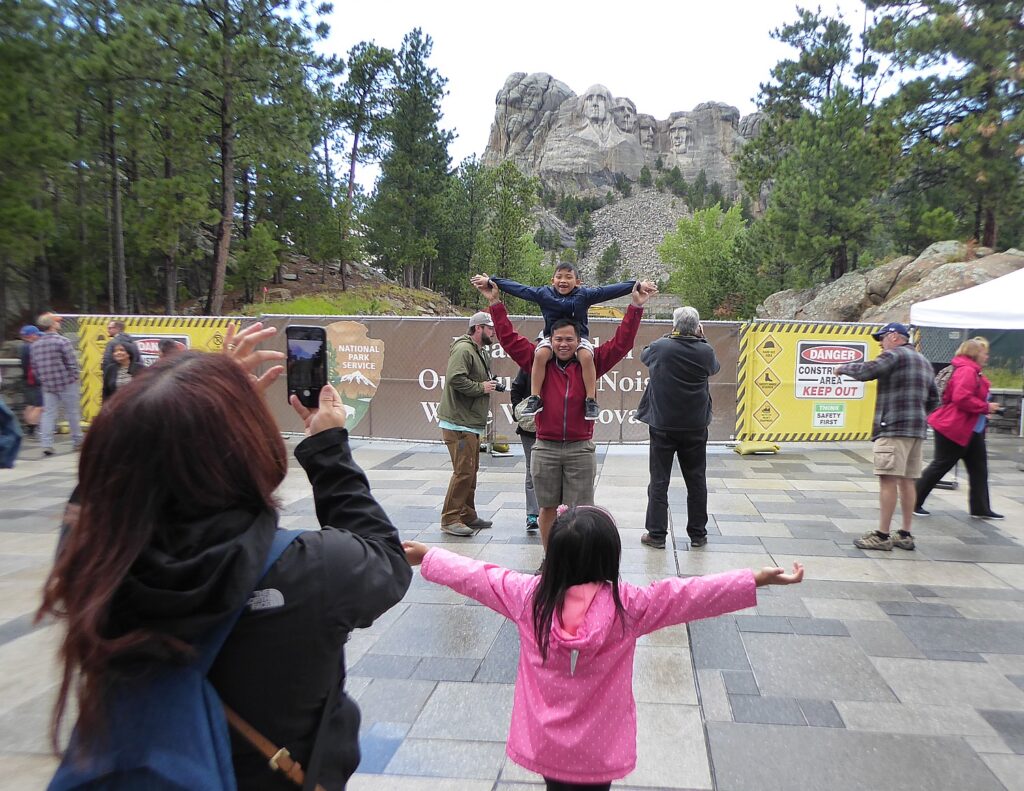
The sculptor, Gutzon Borglum, wrote “Let us place there, carved high, as close to heaven as we can, the words of our leaders, their faces, to show posterity what manner of men they were. Then breathe a prayer that these records will endure until the wind and the rain alone shall wear them away.”
Borglum also wrote, “The purpose of the memorial is to communicate the founding, expansion, preservation, and unification of the United States with colossal statues of Washington, Jefferson, Lincoln, and Theodore Roosevelt.”
The National Park Service offers this about Mount Rushmore National Monument: “Majestic figures of George Washington, Thomas Jefferson, Theodore Roosevelt and Abraham Lincoln, surrounded by the beauty of the Black Hills of South Dakota, tell the story of the birth, growth, development and preservation of this country. From the history of the first inhabitants to the diversity of America today, Mount Rushmore brings visitors face to face with the rich heritage we all share.”
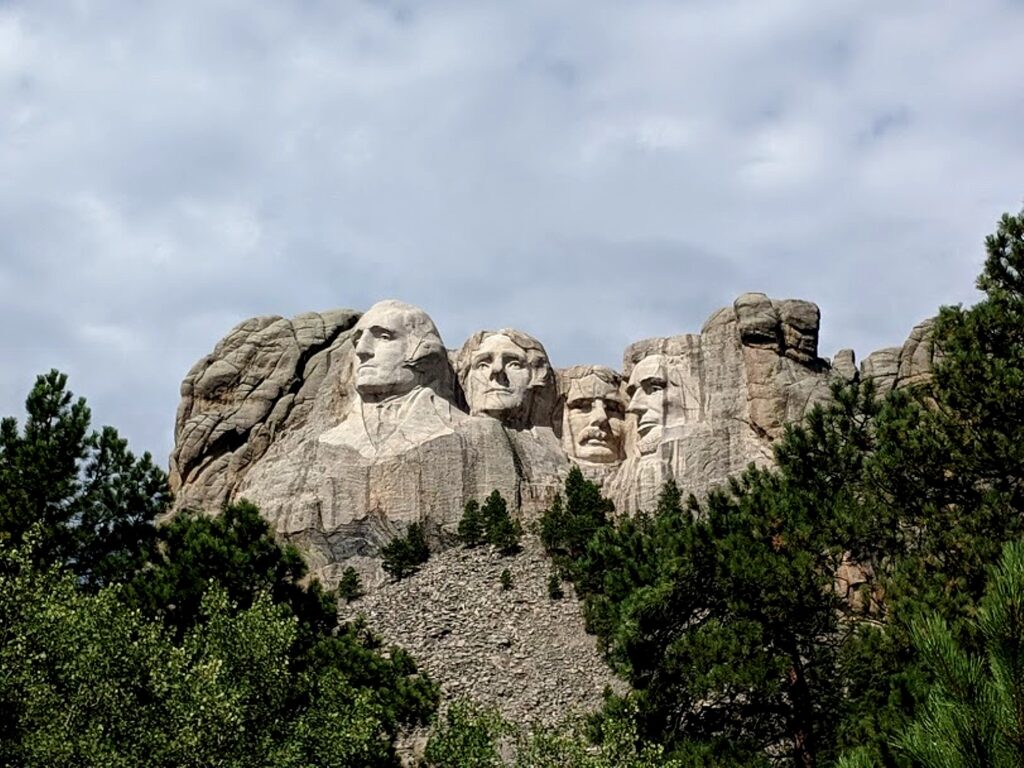
The NPS posits that Borglum “selected these four presidents because from his perspective, they represented the most important events in the history of the United States. Would another artist at that time, or perhaps a modern artist choose differently? As you read more about Borglum’s choices, think about what you might have done if the decision was up to you.”
I stumble upon a 15-minute Ranger talk in the Sculptor’s Studio about Gutzon Borglum, the carving process and the lives of the workers – how they dynamited away 90 percent of the stone, leaving just 3 to 6 inches of material to chisel off by hand, how they hang a weight to where the nose should be and create the facial features from that reference point.

The Ranger stands in front of a model of how a completed Mount Rushmore was envisioned by Borglum. Who knew there was more? I’ve always taken for granted that what we see was all that was meant to be. The model shows that it would have had their jackets down to their waist and hands.
To see the scale of the sculpture, it is hard to contemplate the challenge of blasting away all that rock and carving that stone. But we learn that getting this project underway was a challenge unto itself.
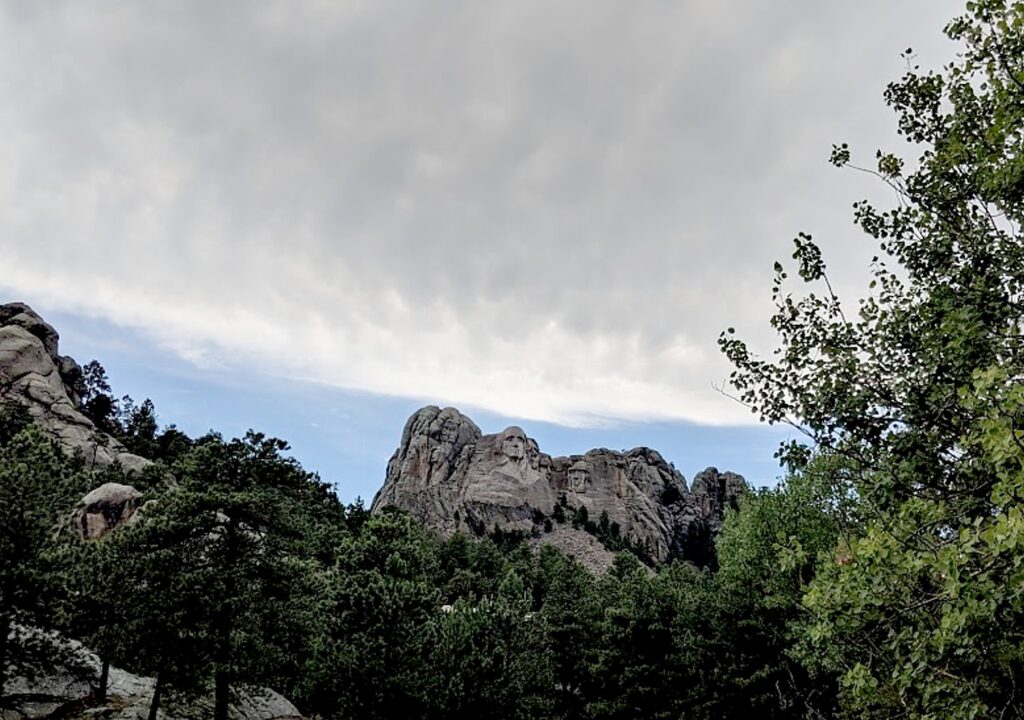
South Dakota historian Doane Robinson is credited with conceiving the idea of carving the likenesses of noted figures into the mountains of the Black Hills of South Dakota in order to promote tourism in the region. But once Doane Robinson and others had found a sculptor, Gutzon Borglum, they had to get permission to do the carving. Senator Peter Norbeck (the man who created the Needles Highway through Custer State Park) and Congressman William Williamson were instrumental in getting the legislation passed to allow the carving. The bill requesting permission to use federal land for the memorial easily passed through Congress. But a bill sent to the South Dakota Legislature faced more opposition.
Robinson’s initial idea was to feature heroes of the American West, such as Lewis and Clark, Oglala Lakota chief Red cloud and Buffalo Bill Cody. But Borglum wanted the sculpture to have broader appeal, so chose the four presidents, who would each symbolize an important aspect of American history. (That might be why Robinson was not chosen for the 12-member commission to oversee the project.)
Early in the project, money was hard to find, despite Borglum’s guarantee that eastern businessmen would gladly make large donations. He also promised South Dakotans that they would not be responsible for paying for any of the mountain carving. Borglum got Treasury Secretary Andrew Mellon on board, but only asked for half of the funding he needed, believing he would be able to match federal funding ($250,000) dollar for dollar with private donations.
Borglum worked on the project from 1927, the presidents’ faces were carved from 1933-1939, with his son, Lincoln. Meanwhile, in 1929, the stock market crashed; in 1933, President Franklin Roosevelt placed Mount Rushmore under the jurisdiction of the National Park Service.
In March, 1941, as a final dedication was being planned, Gutzon Borglum died. This fact, along with the impending American involvement in World War II, led to the end of further carving on the mountain. With the money – and enthusiasm – running out, Congress refused to allocate any more funding. On October 31, 1941, the last day of work, Mount Rushmore National Memorial was declared a completed project.
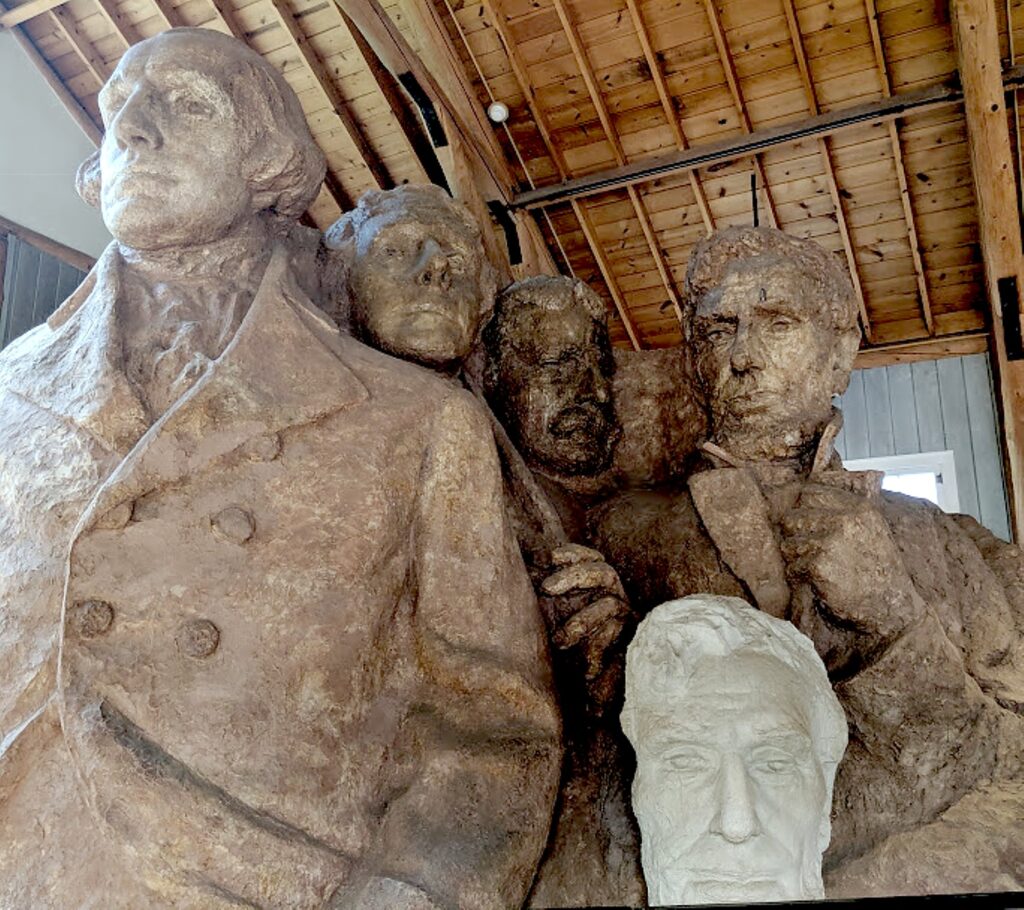
The Ranger explains that the death of the artist raised an ethical issue for anyone who would take over the work. And, the Ranger said, “The country had moved on. They were not as interested in presidents as they were in the 1930s; when Mount Rushmore was a shrine to democracy. And what if the new artist made a mistake?”
I can see how Mount Rushmore was a cautionary tale for the Crazy Horse Memorial and why sculptor Korczak Ziolkowski, who worked on Mount Rushmore before being tasked to do Crazy Horse, refused any federal funding, instead establishing a foundation funded with private donations and admissions. Some 70 years after he began his work, his grandchildren are involved in continuing to carve the memorial.
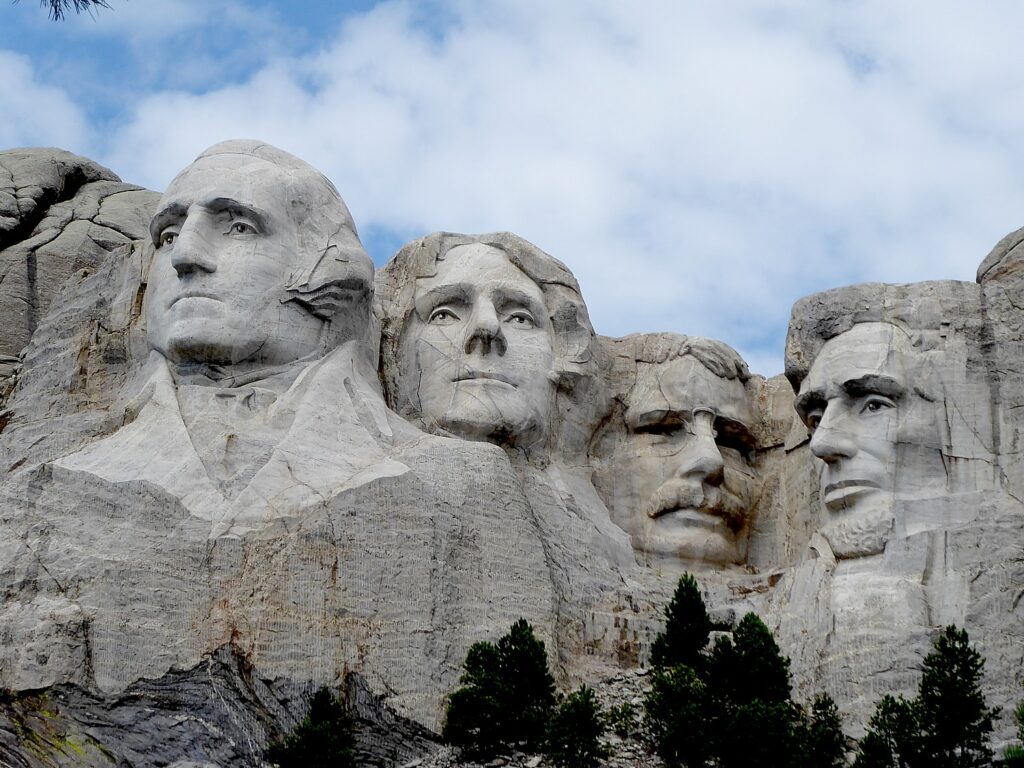
I walk the Presidential Trail (just 0.6 miles long, 422 stairs, weather permitting) to get up close and personal with the mountain sculpture and perhaps glimpse some of the area wildlife.
Some 3 million visitors come to Mount Rushmore each year.
Among the activities offered: the Junior Ranger program (booklets are available at the information desks for ages three to four, five to twelve and 13 and up), and the Carvers’ Café, Ice Cream Shop and Gift Shop.
Also:
Lakota, Nakota and Dakota Heritage Village (10 – 30 mins., free): Explore the history of the Black Hills and the American Indian tribes who have populated this land for thousands of years. Located next to the Borglum View Terrace for 2019, this area highlights the customs and traditions of local American Indian communities. Open 10:30 am to 3 pm, early June through mid-August, weather permitting.
Youth Exploration Area (10 – 30 mins., free): Explore the natural, cultural and historical aspects of Mount Rushmore with interactive programs. Located at the Borglum View Terrace for 2019. Open early June through early August.
Self-Guided Tour (30 – 120 mins; rental fee): Rent an audio tour wand or multimedia device to hear the story of Mount Rushmore through music, narration, interviews, historic recordings and sound effects while walking a scenic route around the park. Available at the Audio Tour Building across from the Information Center (rentals available inside the Information Center during the winter months). The tour and accompanying brochure are available in English, French, German, Lakota, and Spanish.

It had been gray and drizzly when we first arrived making the monument look dull, but as we are leaving, blue sky breaks through and for the first time, I realize that George Washington has a jacket.
(During our visit, the Visitor Center and amphitheater are closed for construction.)
(Just recently, the last living Mount Rushmore construction worker, Donald ‘Nick” Clifford, who worked on the monument from 1938-40, passed away at the age of 98.)
(Mount Rushmore, 13000 Highway 244, Keystone, SD 57751, 605-574-2523, www.nps.gov/moru/index.htm)
Even thought the weather has cleared up just as we are leaving Mount Rushmore, because it is a getaway travel day, the group decides not to bike (the trail James suggests is impractical because it requires the guides to take off the roof racks in order to fit through the tunnel). We decide instead, to go straight to Rapid City, our departure point, for lunch before we all go our separate ways.
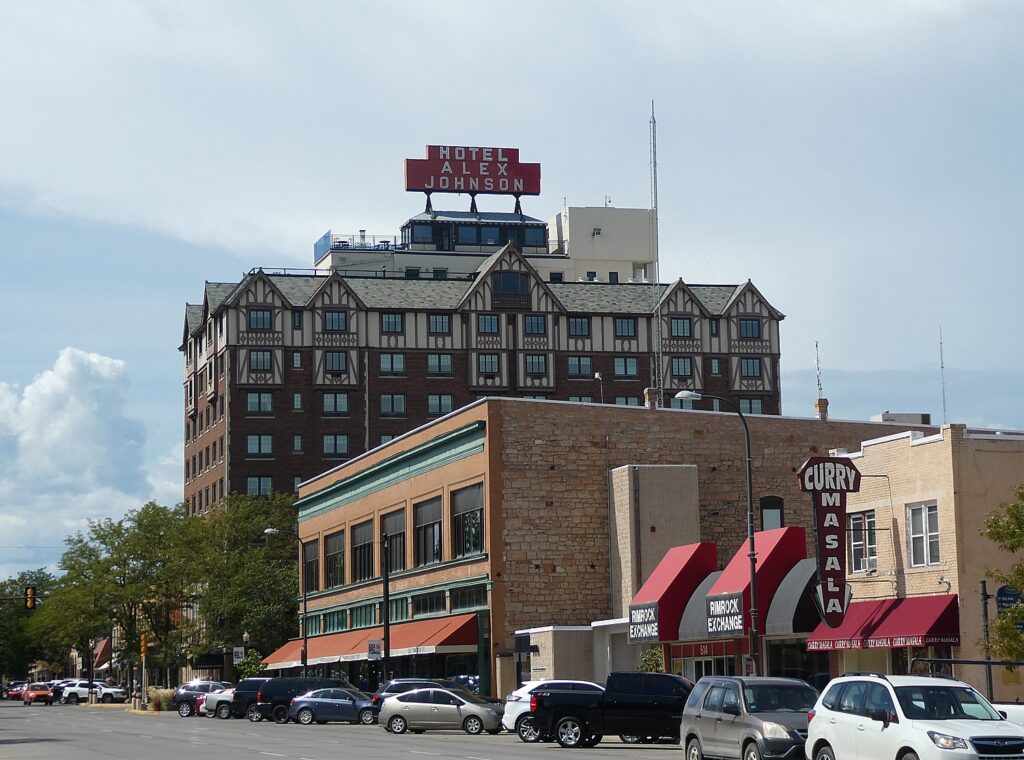
Our last lunch together, in Rapid City, is at Tally’s Silver Spoon (best Reuben sandwich outside of NYC!) – just across the street from the historic Alex Johnson Hotel, where I began my South Dakota odyssey a week ago.
What I love best about Wilderness Voyageurs’ “Badlands and Mickelson Trail” bike tour are the varied experiences: Badlands – fossils – Circle View Guest Ranch – Black Hills – Crazy Horse – Custer State Park – stone spires – wildlife – buffalo – Blue Bell Lodge – Mount Rushmore – biking the 109-mile long Mickelson rail trail.
Guided bike trips are not cheap, but what I look for is value for money – my test is whether I could reproduce the trip for less out-of-pocket, to make up for the decided increase in convenience of having the itinerary already plotted out. I found Wilderness Voyageurs excellent value – in the services provided, wonderful accommodations (especially the guest ranch and the lodge), dining, creating an itinerary that was idyllic, entrances to attractions (Badlands National Park, Crazy Horse Memorial, Mount Rushmore), and also considerate, superb guides, a relaxed, unpressured atmosphere (“You’re on vacation!”).
The destination, South Dakota, is quite sensational and unexpectedly varied – spectacular scenery, nature and wildlife, fossils (!), culture and history – a microcosm of North America, really. Indeed, it is an ideal destination for international visitors to plunge into the American frontier west mythology of the past, but more interestingly, to see the American West as it is today. And frankly, even if I rented a bike and paid for shuttle services, I couldn’t have duplicated the itinerary, or the camaraderie, or the expertise and care.
Wilderness Voyageurs started out as a rafting adventures company 50 years ago, but has developed into a wide-ranging outdoors company with an extensive catalog of biking, rafting, fishing and outdoor adventures throughout the US and even Cuba, many guided and self-guided bike itineraries built around rail trails like the Eric Canal in New York, Great Allegheny Passage in Pennsylvania, and Katy Trail in Missouri.
Wilderness Voyageurs, 103 Garrett St., Ohiopyle, PA 15470, 800-272-4141, [email protected], Wilderness-Voyageurs.com
_________________________
© 2020 Travel Features Syndicate, a division of Workstyles, Inc. All rights reserved. Visit goingplacesfarandnear.com, www.huffingtonpost.com/author/karen-rubin, and travelwritersmagazine.com/TravelFeaturesSyndicate/. Blogging at goingplacesnearandfar.wordpress.com and moralcompasstravel.info. Send comments or questions to [email protected]. Tweet @TravelFeatures. ‘Like’ us at facebook.com/NewsPhotoFeatures
